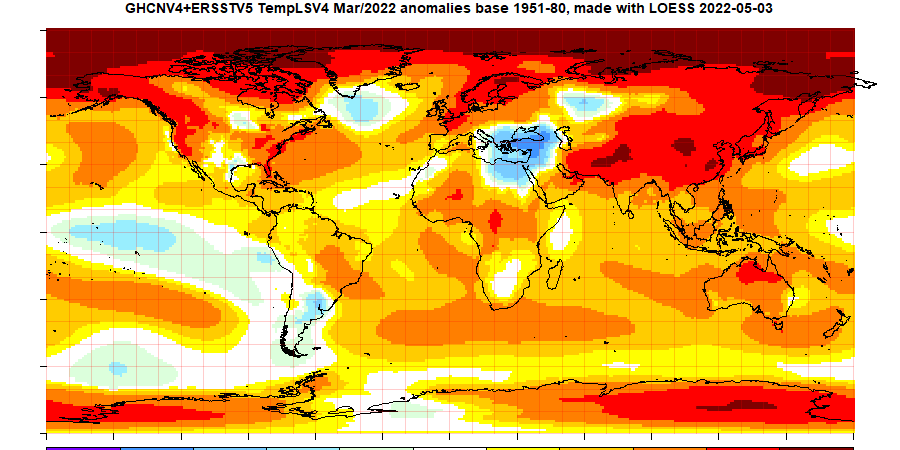Events intruded, and I didn't implement it for routine use immediately, and when I later did, then of course mission creep crept in, and I thought of ways to use the pixel mapping methods for the actual integration (not that I am lackimg options).
However, it really should be done. The rectangular lat/lon method that I use conveys the necessary information in an easily understood way, and I will still be using it for some internal purposes, but it overweights behaviour near the poles visually. I calculated. Here is a table of the % by pixel of colors in my plots for March 2022, shown also below. Color 11 is the warmest (>4°C)
| Color: | 2 | 3 | 4 | 5 | 6 | 7 | 8 | 9 | 10 | 11 |
| Lat/Lon | 0.19 | 0.55 | 1.85 | 5.1 | 10.39 | 13.51 | 24.74 | 21.63 | 13.63 | 8.41 |
| Robinson | 0.22 | 0.66 | 2.17 | 5.55 | 10.68 | 14.18 | 28.01 | 23.13 | 11.22 | 4.18 |
| Mollweide | 0.23 | 0.65 | 2.23 | 5.56 | 10.68 | 13.95 | 28.54 | 23.23 | 11.15 | 3.77 |
March was a month in which the Arctic was very warm, and you can see that there were more than twice s many of the warmest pixels in the lat/lon projection (approx 8% vs 4%). The other projections are close to the true % on the sphere.
I plan to show the three projections in a single frame, with navigation buttons. Robinson will show initially, but you can cycle to Mollweide or lat/lon using the buttons below.












